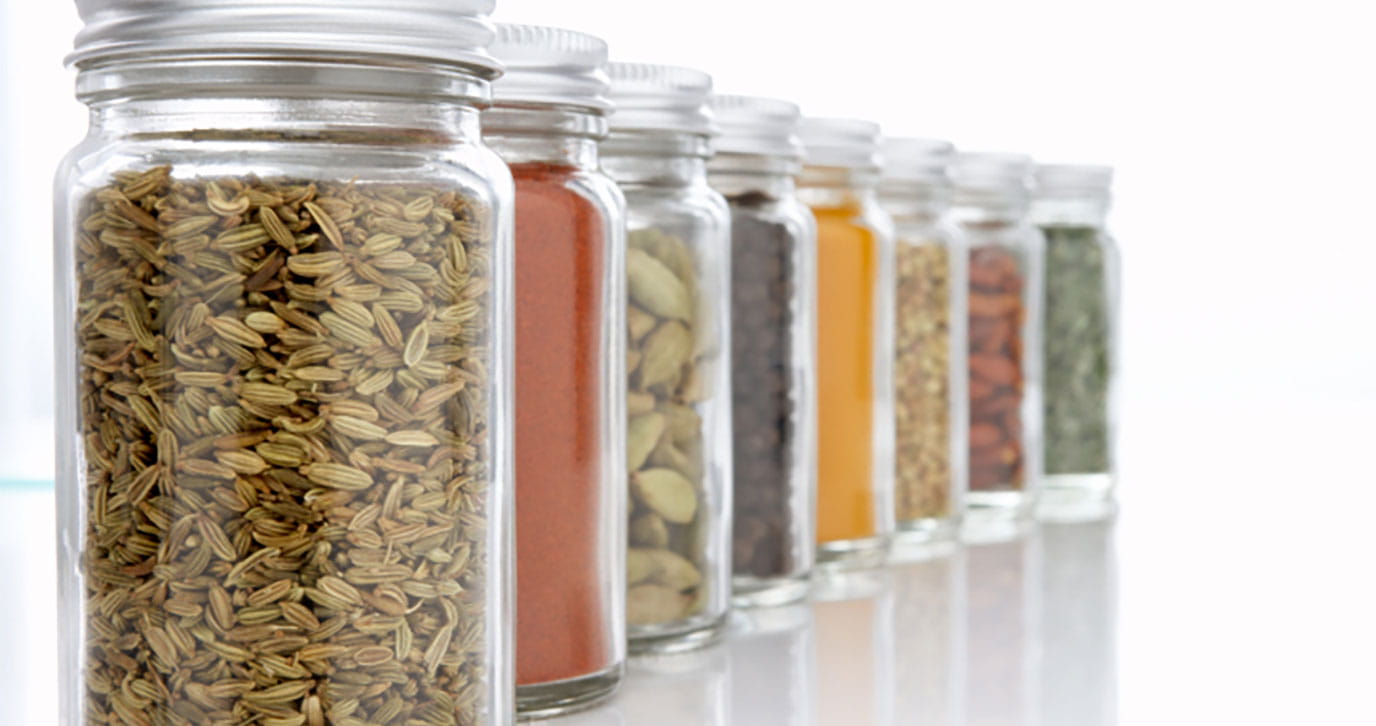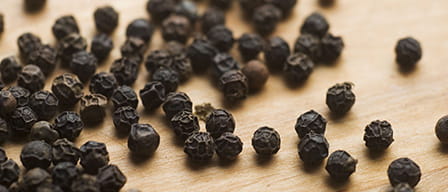
Anise


Bay leaf or bay laurel is a culinary herb obtained from the small evergreen tree Laurus nobilis L. (family Lauraceae). Other members of the Lauraceae family include sassafras, avocado, and cinnamon. The name Laurus nobilis comes from the Latin laurus, which means to praise, and nobilis, which means noble. This plant is native to the Mediterranean region and is cultivated in other warm climates of the southern United States, Central America, Europe, the Middle East, and Asia. The true bay leaf is not to be confused with similarly named substitutes such as Indian bay leaf (Cinnamomum tamala), bay rum tree (Pimenta racemosa), Mexican bay leaf (Litsea glaucescens), Indonesian bay leaf (Szygium polyanthum), and California bay leaf (Umbellularia californica). These others do not exhibit the same odor and flavor profile as the genuine bay leaf and, in some cases, may have undesirable adverse effects when consumed. Laurus nobilis is known by many different names. They include waraq ghaar (Arabic), teejh pat (Urdu), lorbeer (German), lauro or lauriello (Italian), dafni (Greek), laurier d'apollon (French), yue gui shu ye (Chinese), and gekkeiju (Japanese).
The Laurus nobilis plant is a small evergreen tree, which looks like a large shrub. It can grow up to 40 ft. The leaf is elongated, with pointed tips, a wavy edge that curves inward and green to brown in color. The dried leaves are the bay leaves proper. The flowers grow in small clusters and are pale-yellow green. The fruit is an ellipse-shaped berry that is bright green at first and purplish black when ripe with a single seed. The bark is smooth and has an olive green or reddish hue. The leaves are used not only as a spice but also when dried and powdered in food production frequently as a part of soups and condiments. The leaves and fruits have medicinal applications as well. The essential and fixed oils obtained from them are ingredients in food, perfumery, soap, and pharmaceutical products. The essential oil from the leaves contains a variety of phytochemicals with 1,8-cineole or eucalyptol being predominant. Turkey is the world's largest producer and exporter of bay leaves.


In ancient times, bay laurel had decorative uses as a symbol for prosperity, fame, and victory. Ancient Mediterranean cultures also believed this tree had the power to keep them from misfortune, so trees often were planted near houses to deter lightning strikes. In Greek mythology, it was considered sacred, which is why in ancient Greece, receiving a wreath made of bay leaves to wear on their heads was considered an honor bestowed on Olympic winners, poets, victors, and heroes. Even today, its leaves are a symbol of honor and recognition in university graduation ceremonies. In Chinese folk tradition and Taoism, the bay leaf symbolized healing and strength. The Romans spread this plant to parts of Europe from which the first settlers introduced it to colonies in the New World.
Laurus nobilis was widely used as an herbal drug in traditional and folk medicines in many countries around the world, with some applications continuing even to the current day. Not only was the tree’s leaf used medicinally but also the bark, flowers, berries, and seeds. In general, the major uses of this plant include as treatments for diverse gastrointestinal complaints. However, it also had documented applications for many other health problems. In Iranian folk medicine an extract of dried fruit was taken orally as an appetite stimulant and digestive aid, whereas the leaves were administered to alleviate numbness and paralysis. In Israel, essential oil from the fruit was used externally to relieve rheumatic and neuralgic pain. The dried fruit prepared in hot water was given orally in Peru to stimulate circulation. In India, the fruit was taken orally to alleviate diarrhea and applied directly on the skin in crushed form to reduce prickly heat. In Turkey a leaf extract was taken for diabetes, kidney, and stomach disorders, and an extract from flowers and leaves was ingested for heart problems. Bay leaves were part of numerous remedies in Italy. The dried fruit mixed in olive oil was given to relieve the pain and inflammation of rheumatism and the leaves were a main component of a preparation (ricotto) for the treatment of respiratory ailments. Furthermore, a leaf extract was commonly used by women to stimulate milk production following childbirth. In Algeria a leaf extract was taken orally to treat high blood pressure, whereas for hair loss it was massaged into the scalp.
Bay leaf has a bitter, spicy, strong and pungent flavor. The aroma of bay leaf is described as woodsy, herbal, and piney similar to that of oregano and thyme. When crushed, a mild, citrusy, menthol and eucalyptus-like scent is evident. The fruits also are bitter but fragrant. The light-yellow essential oil has a characteristic aromatic, spicy, eucalyptus‐like aroma.
As a culinary herb, bay leaf is used in a wide range of meat, seafood, and vegetable dishes in European, Mediterranean and North American cuisine. Bay leaves are an excellent complement with beef, chicken, game, lamb, fish, seafoods, lentils, rice, tomatoes, and beans. It is often added to many dishes during cooking and then removed before consumption. Specific examples of its use include American chicken jambalaya. It is a common component in the French mixture of herbs bouquet garni as well as in the vegetable stew ratatouille and in coq au vin, a classic dish of chicken braised in red wine and brandy. It flavors stiphado the Greek beef and shallot stew, as well dried fig-based traditional pastries called pastelaria popular in the Greek islands. Bay leaf seasons the traditional stews of rabbit and wild goat in Crete. And in Italy bay leaf is boiled with chestnuts to make ballocioli. In the Catalonia region of Spain, farcellet is a packet of winter savory, oregano and thyme spices, all wrapped in fragrant bay leaves. Bay leaves are a familiar seasoning in British savory dishes, as well as in traditional recipes for pound cake, boiled custards, and sweet milky puddings. In Turkey, bay leaves are in grilled fish and fish stews. It is also an ingredient of the Indian chicken and rice dish biryani. Bay leaves are a part of Thai and Arabic dishes such as spicy black bean soup and fish curry, where the leaves are either used whole or as a garnish. Lu wei is a classic Chinese method of slow cooking of a brine to which numerous spices are added including bay leaf. Bay leaf also is an ingredient in alcoholic drinks such as Bay Leaf Gin Sour, Marmalade and Bay Gin or Old Battle Axe cocktail, which contains mezcal, pineapple rum, pepper, bay leaf syrup and lemon juice.
There may be substantial variation in the flavors and sensory qualities that specific sources of bay leaves produce. This can depend on the regions and countries of cultivation, differences in harvesting and post-harvesting practices and whether fresh or dry leaves are used. For example, under hot and dry growing conditions the bay laurel may have higher concentrations of the flavorful, aromatic essential oil, compared to bay leaves that have been produced from cultivation in wetter and cooler climates.
Our understanding of how bay leaves and other spices and herbs potentially benefit health is growing. Using diverse spices and herbs as seasonings has been shown to unlock new flavors and tastes that enhance our enjoyment of numerous foods and vegetables, while reducing our intake of added saturated fats, sugar and sodium. Explore ways to incorporate various spices and herbs to create healthy meals and expand your culinary experiences. Learn about recommendations for building a balanced and healthy diet.

Anise

Basil

Bay Leaf

Black Pepper

Black Seed

Cardamom
